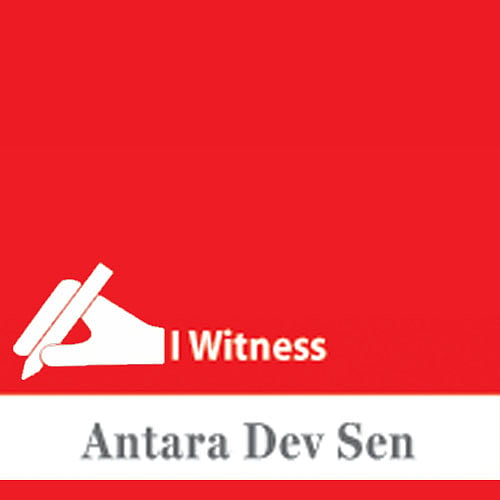The grand swearing-in ceremony is over. As I write this, it is Prime Minister Narendra Modi’s first day in office. His cabinet is shaping up. New ministers are taking charge. A new era is expected to begin. The era of reinventing India by pushing aside the legacy of Nehru.
Fittingly, this attempt to usher in a decisively post-Nehruvian India begins today, the 27th of May, 2014. Exactly 50 years after the death of Jawaharlal Nehru. India’s first and longest-serving Prime Minister died on the 27th of May 1964, and India was plunged into what is known as the post-Nehru era. But the spirit of Nehru remained. Now, after half a century of ruling Indian politics and social choice, Nehru’s spirit faces ghost-busters determined to exorcise it.
Logically, this may be a good step. Nehru’s descendants and Nehruvian dreams have been ruling India for far too long. Times change, national and public needs change accordingly. And it is perfectly understandable if a new generation of politicians, born in Independent India, in families very different from those of Nehru and his erudite colleagues, have a different world view, which demands a different roadmap for India.
Over the decades, the healthy respect that India had for Pandit Nehru, a brilliant statesman, orator and far-sighted Prime Minister, had changed to absolute awe and then to unconditional worship. Following the long reign of his daughter and political heir Indira Gandhi, it finally reached a stage where the political party Nehru had served so faithfully ended up looking like a humongous bunch of groupies of Nehru’s descendants. It could not look beyond the Nehru-Gandhi dynasty for leadership, apparently because that was the only glue that would hold the 129-year-old party together.
Even a reluctant leader like Rahul Gandhi would do. After all, he was the son of Prime Minister Rajiv Gandhi, grandson of Prime Minister Indira Gandhi, and great grandson of Prime Minister Nehru. How could he not be Prime Minister himself? It was in his genes.
The irony of this blind worship of Nehru’s descendants as an almost royal dynasty seemed lost on the members of the Congress. Nehru himself disliked dynasties and had hoped to free India from the vicious grip of dogma, blind worship and a man-made caste system. He had headed a fantastic team of first movers right when India was being born as an independent nation, a dedicated and idealistic team of ministers, policy makers and administrators who had laid the foundation of a democracy that hoped to cut through religious and social bias to create an egalitarian, fair and free society. Sadly, that has not quite happened even now, even after 66 years of existing as a free nation. Off and on, India has spent much of this time under the Congress regime.
So it is understandable that India wants a change of regime, and a change of attitude. That it wishes to move away from Nehruvian models of development based on socialism to more aggressively capitalist models of development. But if in the process of stepping out of Nehruvian socialism and the secular, inclusive idea of India we proceed to dismantle the very foundation that India stands on, we may have a problem.
And this is not only about majoritarian religious sentiment dominating minorities. This inequality and bias towards the powerful is possible in economic sentiments as well. Let us consider a concrete example of the choices and dilemmas before a new government. The Modi sarkar proposes to develop agriculture in the manner in which industries have been traditionally approached. Having noted the huge price differentials between first world and domestic markets, the government seems to want to reposition the sector as an export-oriented industry. While this might dramatically increase rural purchasing power and reduce the need for subsidies, it would also bring on an automatic dependence on cash crops which may interfered with food security – too many avocados and too few potatoes. Producers in such markets become vulnerable to fickle tastes and the vagaries of markets continents away. While opening up agricultural markets might reduce rural poverty, the government must create a safety net or face serious political consequences in hard times.
Also, such a market depends on good farm-to-fork logistics and a serviceable cold chain. But the BJP has been opposed to FDI in retail, precisely the policy change which would have created private investment in cold chains and logistics. Besides, this does not solve the main problem which plagued the UPA 2 government – galloping food inflation. Indeed, further inflation would be a result of any reduction in poverty, and the government must be prepared to deal with it. This is the main problem that will bedevil the new government. A commitment to growth is generally accompanied by a willingness to grin and bear inflation. Both the electorate and the government it has voted to office glosses over this parallel, which could seriously interfere with the rhetoric of ‘achhe din aane wale hain.’ In fact, the only way to hold off the effects of inflation on household budgets before wages catch up could be welfare. It is a measure that many countries – including all the first world nations – instituted when they ramped up growth in the last century.
It would be rather ironic if the government finds that it must pay out doles and subsidies in order to bridge the gap. It would be interesting to see if, at the time, it has the maturity to acknowledge that the Nehruvian era got some things right. And that the post-Nehruvian rights-based approach of the UPA government was a better and kinder way of dealing with the problem than to hand down doles.
Antara Dev Sen is Editor of The Little Magazine. Email: sen@littlemag.com
Antara Dev Sen










